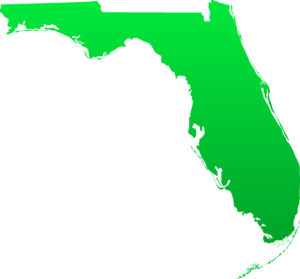(a) Applicability. This rule applies to those proceedings that invoke the jurisdiction of the courts described in rules 9.030(a)(3), (b)(2), (b)(3), (c)(2), and (c)(3) for the issuance of writs of mandamus, prohibition, quo warranto, certiorari, and habeas corpus, and all writs necessary to the complete exercise of the courts’ jurisdiction; and for review of nonfinal administrative action.
(b) Commencement; Parties. The original jurisdiction of the court shall be invoked by filing a petition, accompanied by any filing fees prescribed by law, with the clerk of the court having jurisdiction. The parties to the proceeding shall be as follows:
(1) If the petition seeks review of an order entered by a lower tribunal, all parties to the proceeding in the lower tribunal who are not named as petitioners shall be named as respondents.
(2) If the original jurisdiction of the court is invoked to enforce a private right, the proceedings shall not be brought on the relation of the state.
(3) The following officials shall not be named as respondents to a petition, but a copy of the petition shall be served on the official who issued the order that is the subject of the petition:
(A) judges of lower tribunals shall not be named as respondents to petitions for certiorari;
(B) individual members of agencies, boards, and commissions of local governments shall not be named as respondents to petitions for review of quasi-judicial action; and
(C) officers presiding over administrative proceedings, such as hearing officers and administrative law judges, shall not be named as respondents to petitions for review of nonfinal agency action.
(c) Petitions for Certiorari; Review of Nonfinal Agency Action; Review of Prisoner Disciplinary Action. The following shall be filed within 30 days of rendition of the order to be reviewed:
(1) a petition for certiorari;
(2) a petition to review quasi-judicial action of agencies, boards, and commissions of local government, which action is not directly appealable under any other provision of general law but may be subject to review by certiorari;
(3) a petition to review nonfinal agency action under the Administrative Procedure Act; or
(4) a petition challenging an order of the Department of Corrections entered in prisoner disciplinary proceedings.
(d) Orders Excluding or Granting Access to Press or Public.
(1) A petition to review an order excluding the press or public from, or granting the press or public access to, any proceeding, any part of a proceeding, or any records of the judicial branch, shall be filed in the court as soon as practicable following rendition of the order to be reviewed, if written, or announcement of the order to be reviewed, if oral, but no later than 30 days after rendition of the order. A copy of the petition shall be furnished to the person (or chairperson of the collegial administrative agency) issuing the order, the parties to the proceeding, and any affected non-parties, as defined in Florida Rule of General Practice and Judicial Administration 2.420.
(2) The court shall immediately consider the petition to determine whether a stay of proceedings in the lower tribunal or the order under review is appropriate and, on its own motion or that of any party, the court may order a stay on such conditions as may be appropriate. Any motion to stay an order granting access to a proceeding, any part of a proceeding, or any records of the judicial branch made under this subdivision must include a signed certification by the movant that the motion is made in good faith and is supported by a sound factual and legal basis. Pending the court’s ruling on the motion to stay, the clerk of the court and the lower tribunal shall treat as confidential those proceedings or those records of the judicial branch that are the subject of the motion to stay.
(3) Review of orders under this subdivision shall be expedited.
(e) Petitions for Writs of Mandamus and Prohibition Directed to a Judge or Lower Tribunal. When a petition for a writ of mandamus or prohibition seeks a writ directed to a judge or lower tribunal, the following procedures apply:
(1) Caption. The name of the judge or lower tribunal shall be omitted from the caption. The caption shall bear the name of the petitioner and other parties to the proceeding in the lower tribunal who are not petitioners shall be named in the caption as respondents.
(2) Parties. The judge or the lower tribunal is a formal party to the petition for mandamus or prohibition and must be named as such in the body of the petition (but not in the caption). The petition must be served on all parties, including any judge or lower tribunal who is a formal party to the petition.
(3) Response. Following the issuance of an order pursuant to subdivision (h), the responsibility for responding to a petition is that of the litigant opposing the relief requested in the petition. Unless otherwise specifically ordered, the judge or lower tribunal has no obligation to file a response. The judge or lower tribunal retains the discretion to file a separate response should the judge or lower tribunal choose to do so. The absence of a separate response by the judge or lower tribunal shall not be deemed to admit the allegations of the petition.
(f) Review Proceedings in Circuit Court.
(1) Applicability. The following additional requirements apply to those proceedings that invoke the jurisdiction of the circuit court described in rules 9.030(c)(2) and (c)(3) to the extent that the petition involves review of judicial or quasi-judicial action.
(2) Caption. The caption shall contain a statement that the petition is filed pursuant to this subdivision.
(3) Duties of the Circuit Court Clerk. When a petition prescribed by this subdivision is filed, the circuit court clerk shall forthwith transmit the petition to the administrative judge of the appellate division, or other appellate judge or judges as prescribed by administrative order, for a determination as to whether an order to show cause should be issued.
(4) Default. The clerk of the circuit court shall not enter a default in a proceeding where a petition has been filed pursuant to this subdivision.
(g) Petition. The caption shall contain the name of the court and the name and designation of all parties on each side. The petition shall not exceed 13,000 words if computer-generated or 50 pages if handwritten or typewritten and shall contain:
(1) the basis for invoking the jurisdiction of the court;
(2) the facts on which the petitioner relies;
(3) the nature of the relief sought; and
(4) argument in support of the petition and appropriate citations of authority.
If the petition seeks an order directed to a lower tribunal, the petition shall be accompanied by an appendix as prescribed by rule 9.220, and the petition shall contain references to the appropriate pages of the supporting appendix.
(h) Order to Show Cause. If the petition demonstrates a preliminary basis for relief, a departure from the essential requirements of law that will cause material injury for which there is no adequate remedy by appeal, or that review of final administrative action would not provide an adequate remedy, the court may issue an order either directing the respondent to show cause, within the time set by the court, why relief should not be granted or directing the respondent to otherwise file, within the time set by the court, a response to the petition. In prohibition proceedings, the issuance of an order directing the respondent to show cause shall stay further proceedings in the lower tribunal.
(i) Record. A record shall not be transmitted to the court unless ordered.
(j) Response. Within the time set by the court, the respondent may serve a response, which shall not exceed 13,000 words if computer-generated or 50 pages if handwritten or typewritten and which shall include argument in support of the response, appropriate citations of authority, and references to the appropriate pages of the supporting appendices.
(k) Reply. Within 30 days thereafter or such other time set by the court, the petitioner may serve a reply, which shall not exceed 4,000 words if computer-generated or 15 pages if handwritten or typewritten, and supplemental appendix.

